Birds are master builders, and the majority start intricately weaving nests in late winter so that they can safely contain their eggs and nestlings in spring.
Many birds can be identified solely through the composition of their nest, as they instinctively build homes that are unique to their species.
The outer layers of birds’ nests are usually made up of coarse material selected to camouflage the nest with the surroundings, while the inside is often lined with soft, fine material to cushion the eggs and hatchlings. The lining of the nest also provides insulation so that it maintains a constant temperature.
Birds are creative species and will forage around for the ideal material to create a cosy and sturdy habitat for their offspring. Some birds, particularly long-tailed tits, are known to travel around 600 to 700 miles to gather up to 2,000 feathers to ensure their nesting space is warm and soft.
The workmanship that goes into nest building can take up a great deal of time and energy for a bird. To give them a helping hand, particularly during cold and snowy spells where necessary items may be hidden under snow or ice, or be wet due to consistent precipitation, it is handy to hang out a nesting container so birds have access to dry, natural materials to build the perfect nest.
It is really simple to make a nesting holder by bending wire into a spiral shape and slotting all the material in through the gaps. I made a spiral at either end of the wire until the ends met halfway in the middle, and then twisted the wire in to close the gap, and tied a piece of natural hemp string to hang it up with. I also placed a small vegan suet ball at the bottom of the holder to attract birds’ attention, as per the images below:
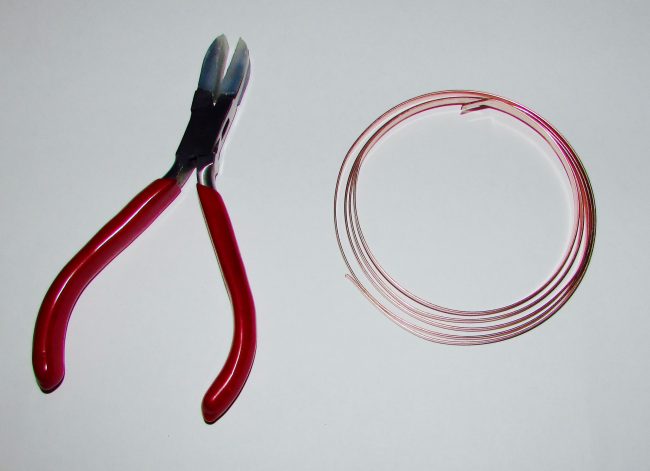
Pliers and flat bending wire.
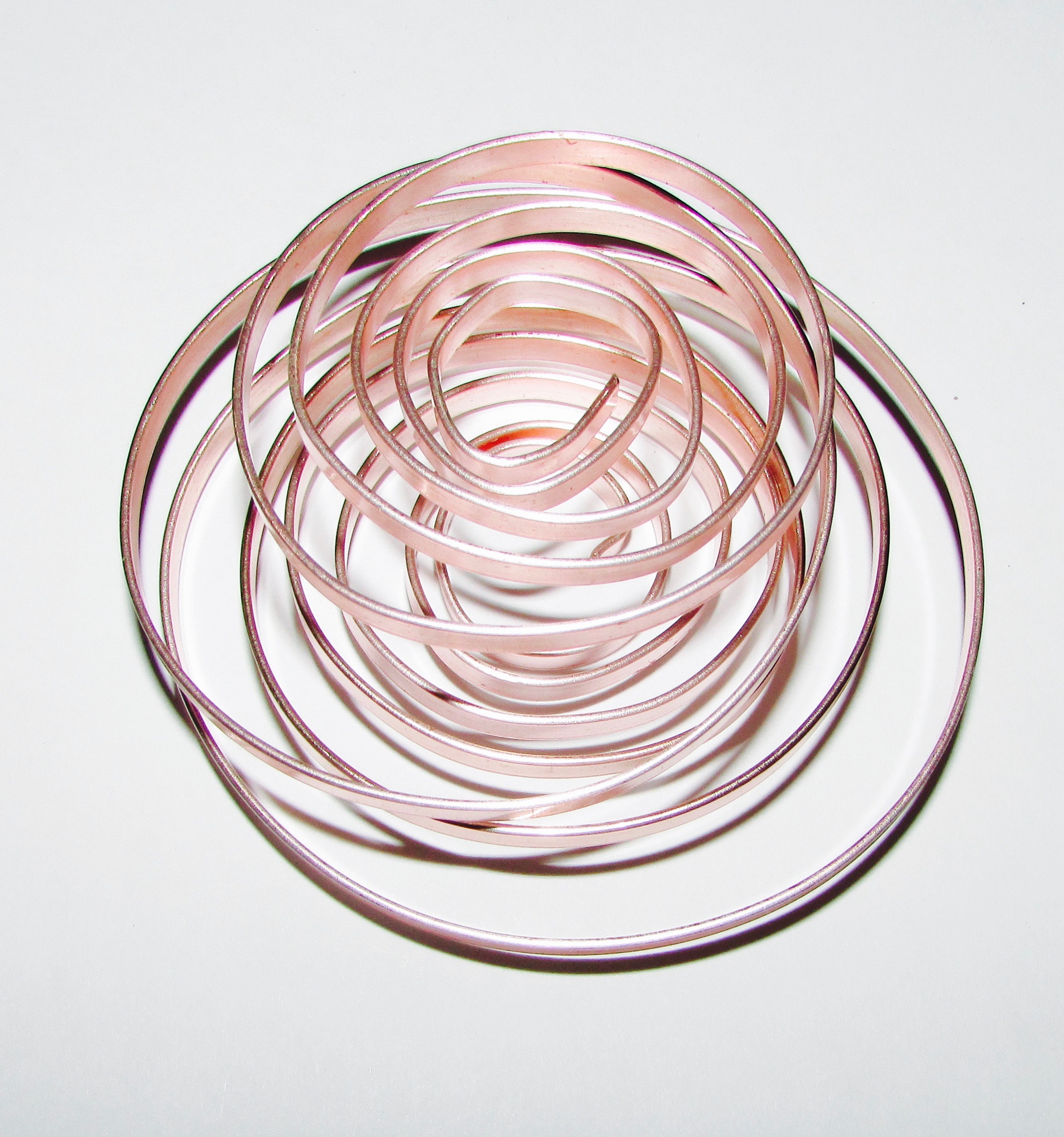
Curve either end of the wire to make a spiral until the ends meet.
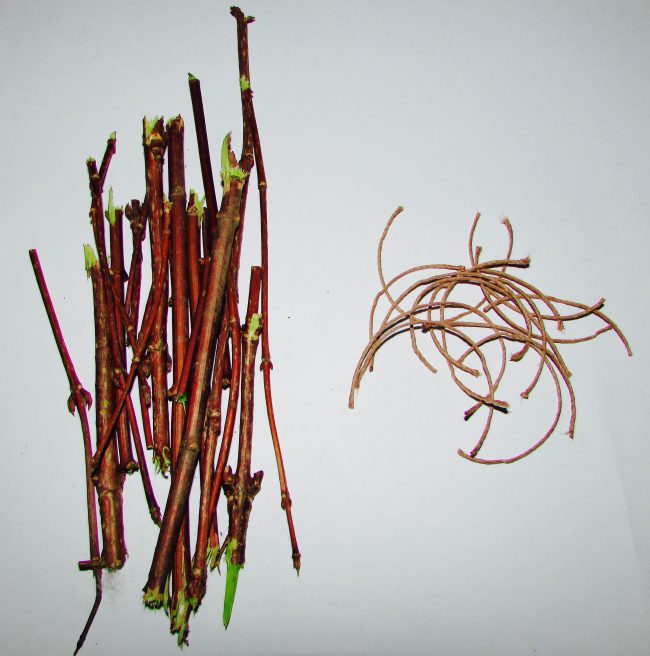
Twigs and natural hemp.
Sheep’s wool collected from wire fences while out walking, and dog fur from recent grooming.
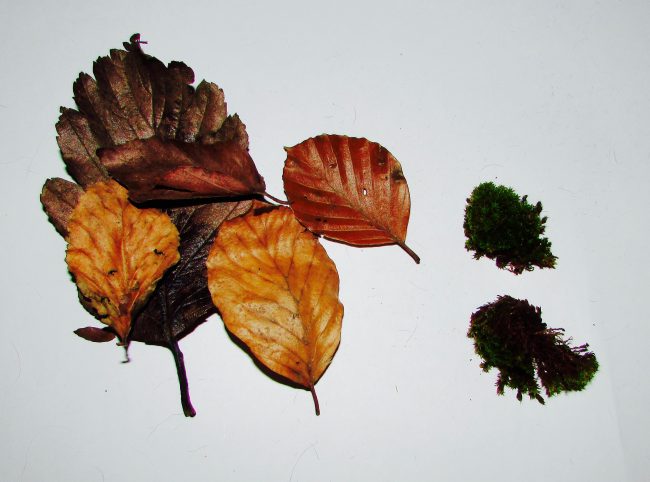
Dried leaves and moss.
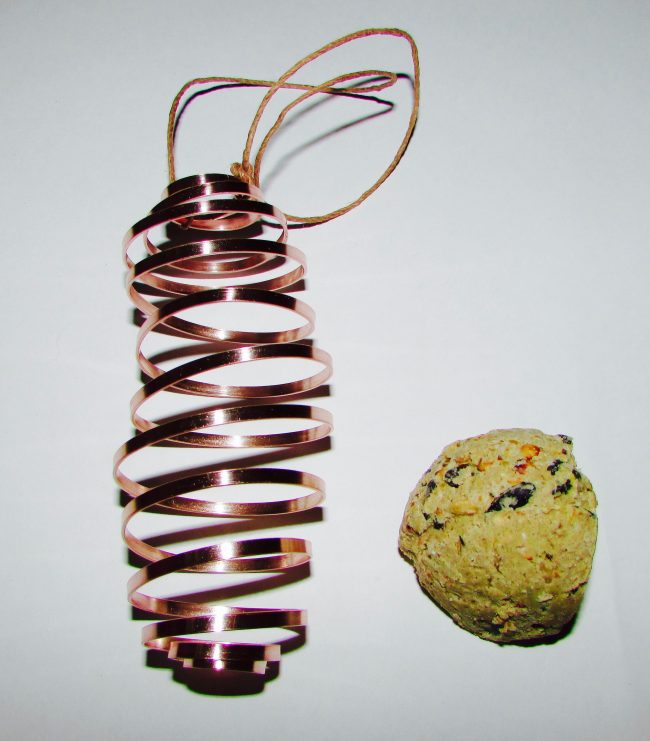
Wire holder and suet ball for food and to attract the birds.
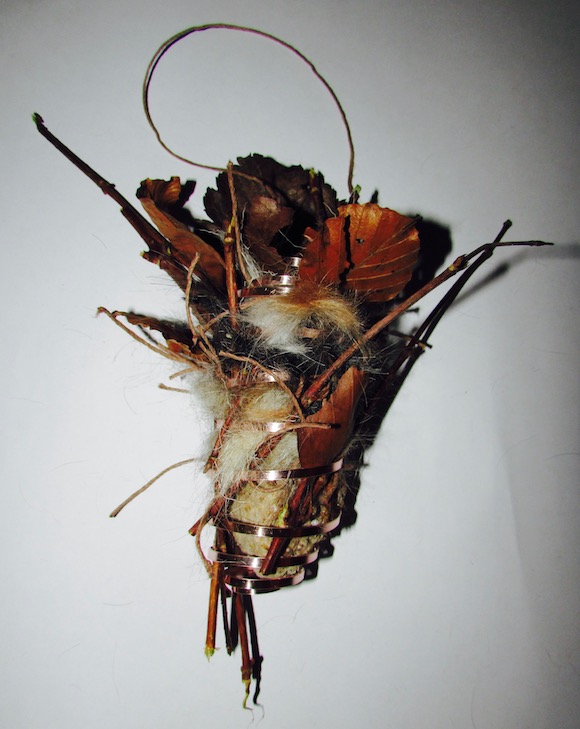
When putting out nesting material for birds, it is safer to go with natural fibres, such as:
Twigs and sticks
Mud
Straw
Dog/Horse hair
Moss
Bark strips
Pine needles
Leaves
Grass cuttings
Feathers
Plant fluff or down, from milkweed, honeysuckle, cattail, or cottonwood
Sheep’s wool as it is durable and will not absorb water
Untreated yarn
Pure cotton
It is also common for people to leave out a pot of mud, or to create a muddy corner in the garden, as many birds use it to strengthen the inside of their nest. Another tip is to leave a pile of leaves and twigs for birds to forage around in.
Avoid the following and, if possible, remove any bits and pieces of these objects you might have lying around your garden during nesting season.
Synthetic string.
Yarn, twine, or string from natural fibres can be great for nest building but only in short lengths—no longer than seven centimeters long. Longer pieces can tangle around birds’ feet and necks and can cause cuts, amputations, or choking. Nylon string and netting are dangerous because birds can get tangled up in it. If the string is too short, they will have difficulty handling it.
Dryer lint.
Dryer lint hardens and disintegrates and sticks to damp feathers and nestlings when wet. It is also can be harmful and highly toxic to baby birds as it is likely to be steeped with residues from detergents, soaps, and softeners. Dryer lint crumbles so it can make the nest unstable and hatchlings could fall out or be vulnerable to predators.
Chemically treated hair.
Although many people leave out human hair, it can be toxic if it has been chemically treated or has been washed with a strong smelling shampoo and conditioner. Even short strands can be a threat to birds and can get tangled in their legs and cut off circulation. Do not use pet or animal fur that has been treated for fleas.
Chemically treated grass clippings.
Only use grass clippings if the lawn hasn’t been chemically treated with fertilisers, pesticides, or weed killers, as chemically treated grass is also toxic and can make birds sick and possibly kill them. Only leave out dry grass clippings as wet grass can get mouldy.
Plastic strips.
Plastic is harmful to both birds and the environment, so although many birds may use it in their nest, it is best to be avoided.
Foil/Metal.
Birds are attracted to shiny materials that catch the light, such as foil, tinsel, metal, or wire and may pick up these materials to build nests with. However, the sharp edges can cut them or their babies, so it is advisable to remove these items from around your garden and yard to prevent possible injuries.
Ensure the material used for nesting is not too eye-catching as it is important for bird’s nests to blend in, and make sure anything left out is not contaminated with mites, old food, chemicals, or faeces, as these can be life-threatening to brooding birds and their hatchlings.
To prevent nesting materials from blowing around the garden, place them in a holder similar to the one above, or in a hanging basket, suet cage, or peanut feeder, and then peg it to the washing line or hang it from a fence post or tree branch near to where birds are building their nests.
~
Bonus: Tim Brod—King of the Bees
~
~
~
Author: Alex Myles
Image: Author’s Own, Pixabay/tommileew
Editor: Travis May
Copy & Social Editor: Callie Rushton


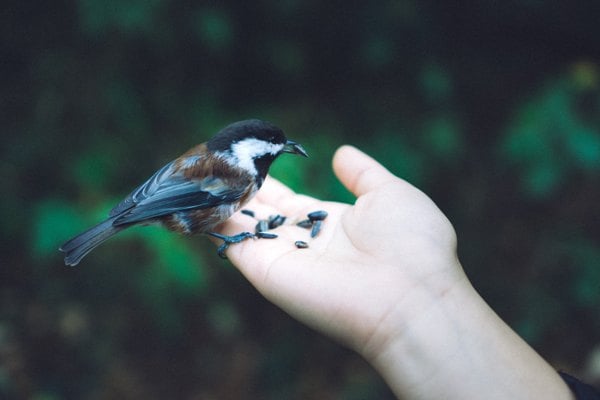
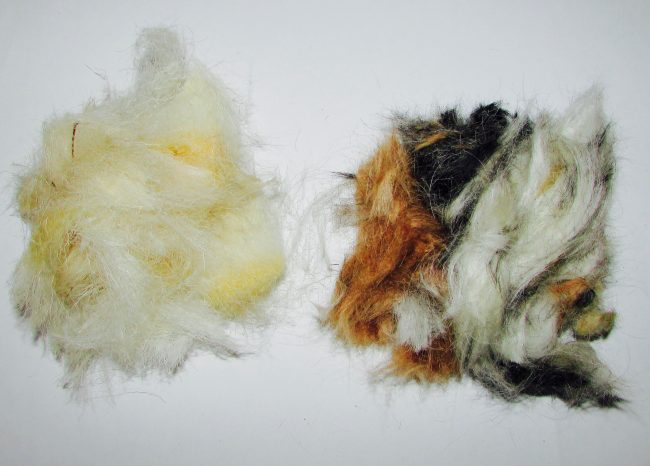








Read 0 comments and reply